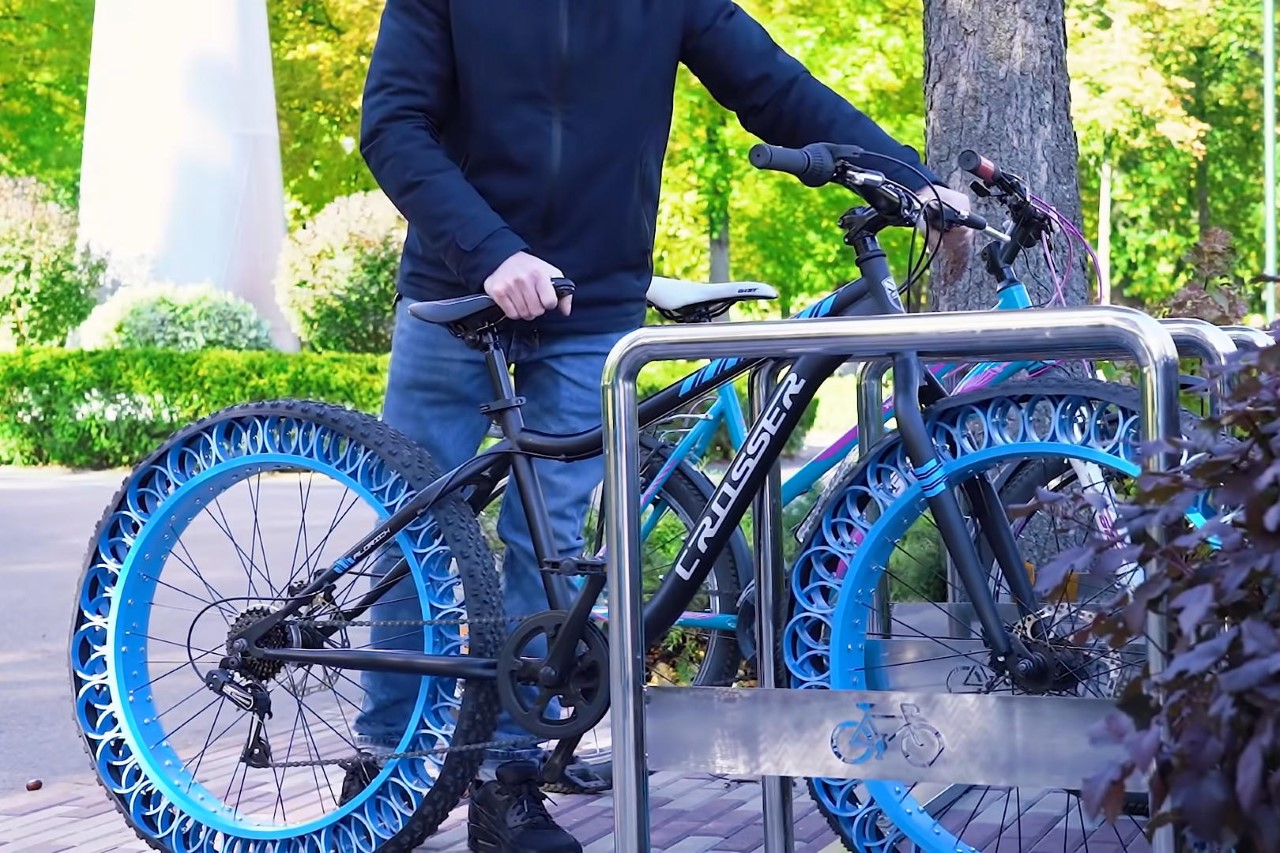It’s safe to say that making Wheel-less Bicycles wasn’t enough for YouTuber The Q. The crazy builder is back with yet another zany invention – creating airless tires that are rugged, have shock absorption, and are entirely handmade from sliced PVC pipes.
Airless tires have been around for practically decades, and even NASA has seen the merits of building tires that aren’t pressurized or prone to puncturing. However, their invention hasn’t really affected consumer-grade vehicles yet, given how complex they can be to manufacture. The wheels of most airless tires, like the Michelin concept shown here, are designed using complex algorithms. These algorithms generate such intricate designs that they can only built with 3D printers. The Q circumvents that with a lifehack of his own – using cross-sections of a PVC pipe to replicate the same bounce of a regular tire with the robust reliability of an airless one.
Designer: The Q
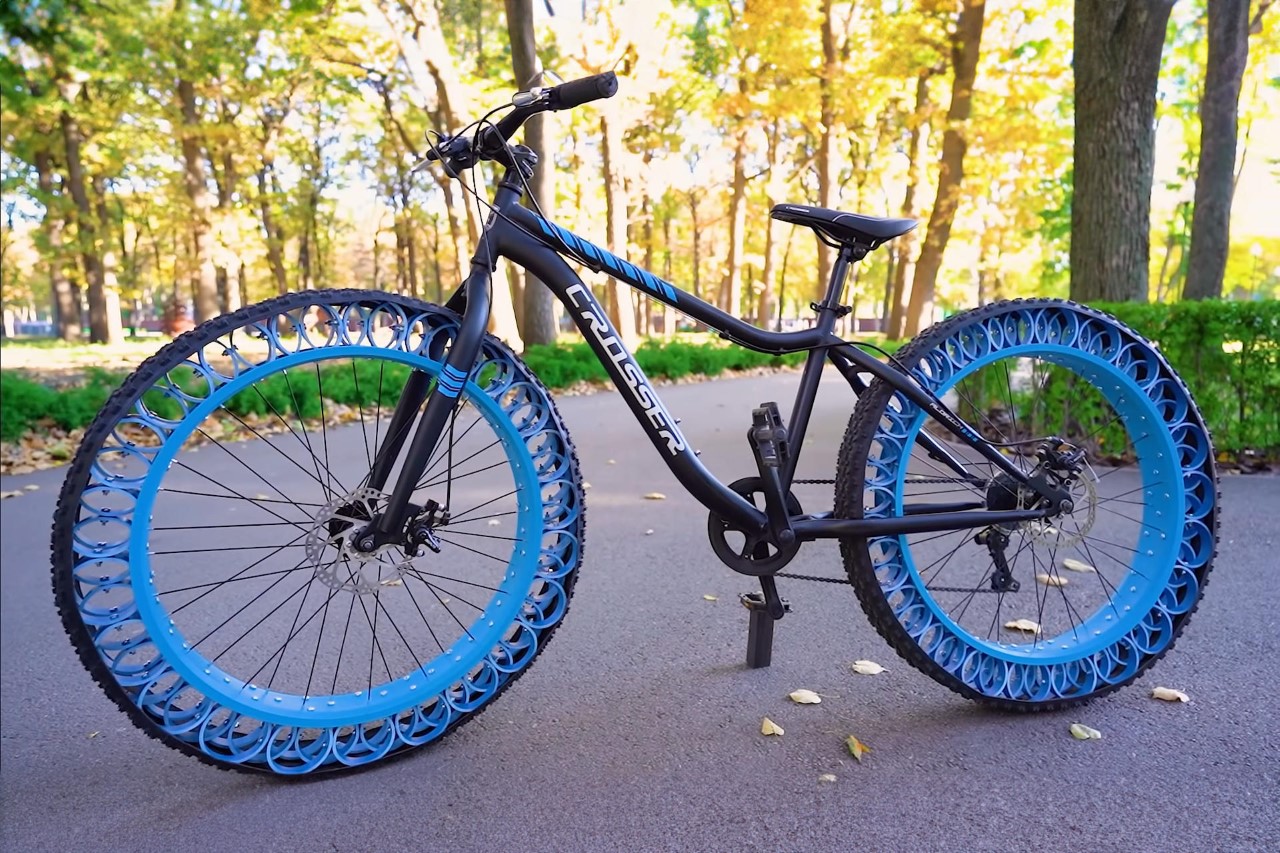
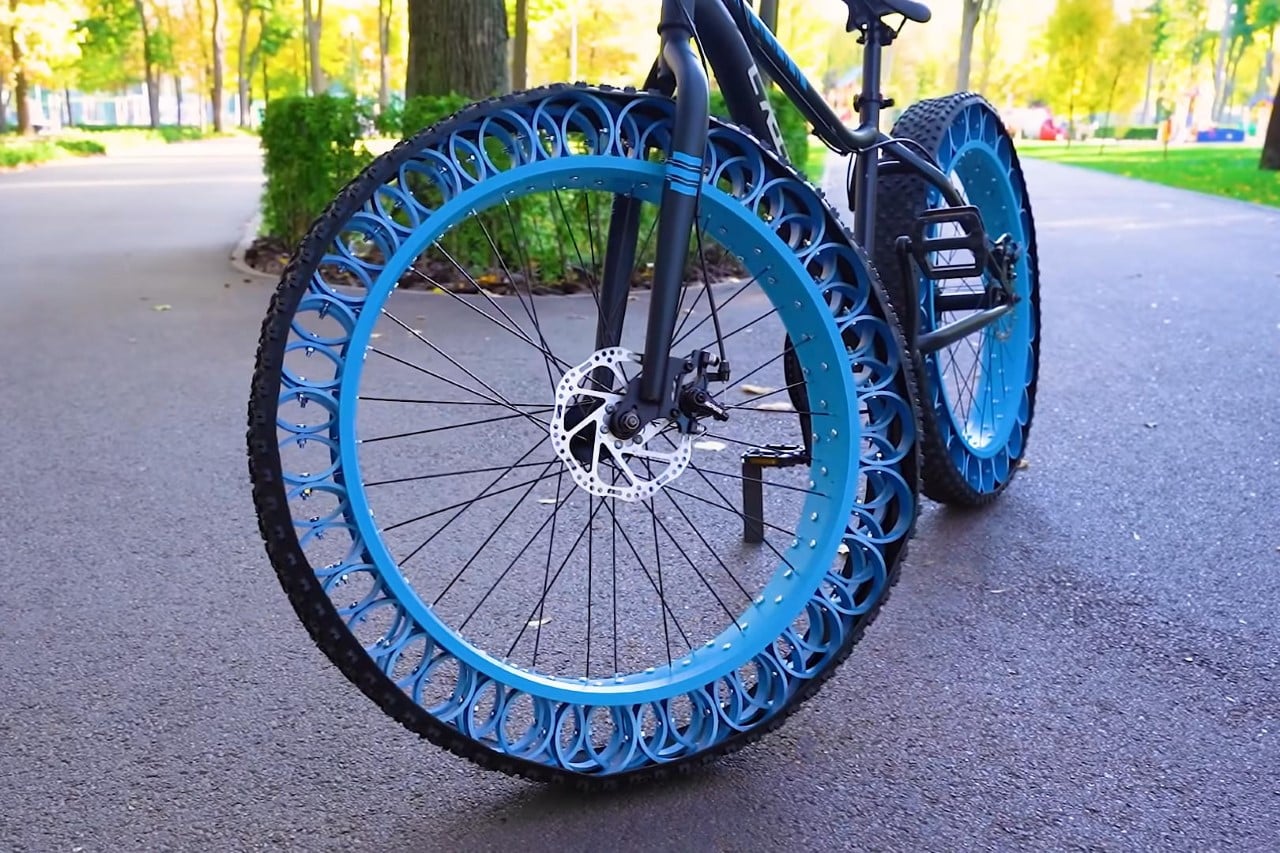
The tire’s design bases itself on one of The Q’s older prototypes, which used 60 tennis balls instead. This PVC pipe version, however, has the look and feel of a life hack that is likely to work. A large piece of PVC is much more cost-effective than buying and replacing tennis balls each week.
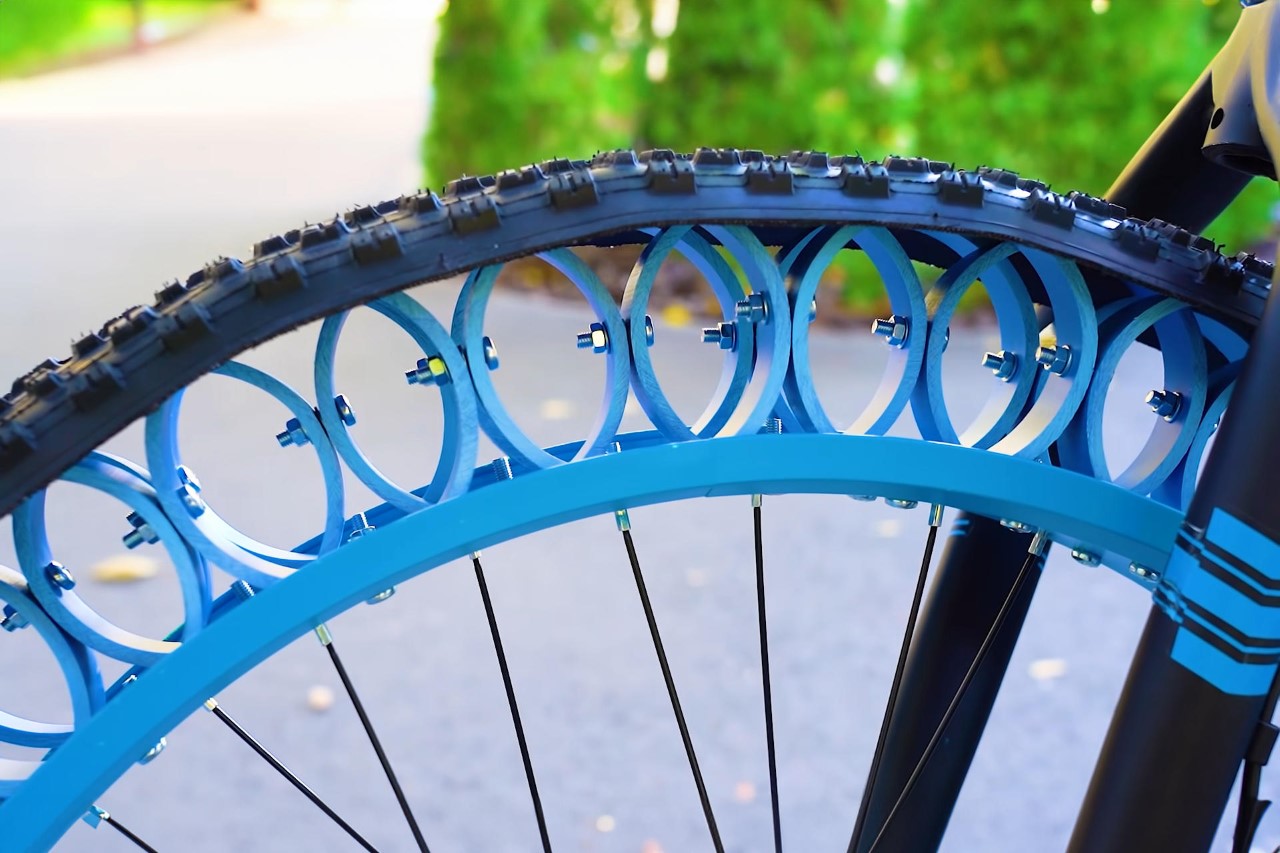
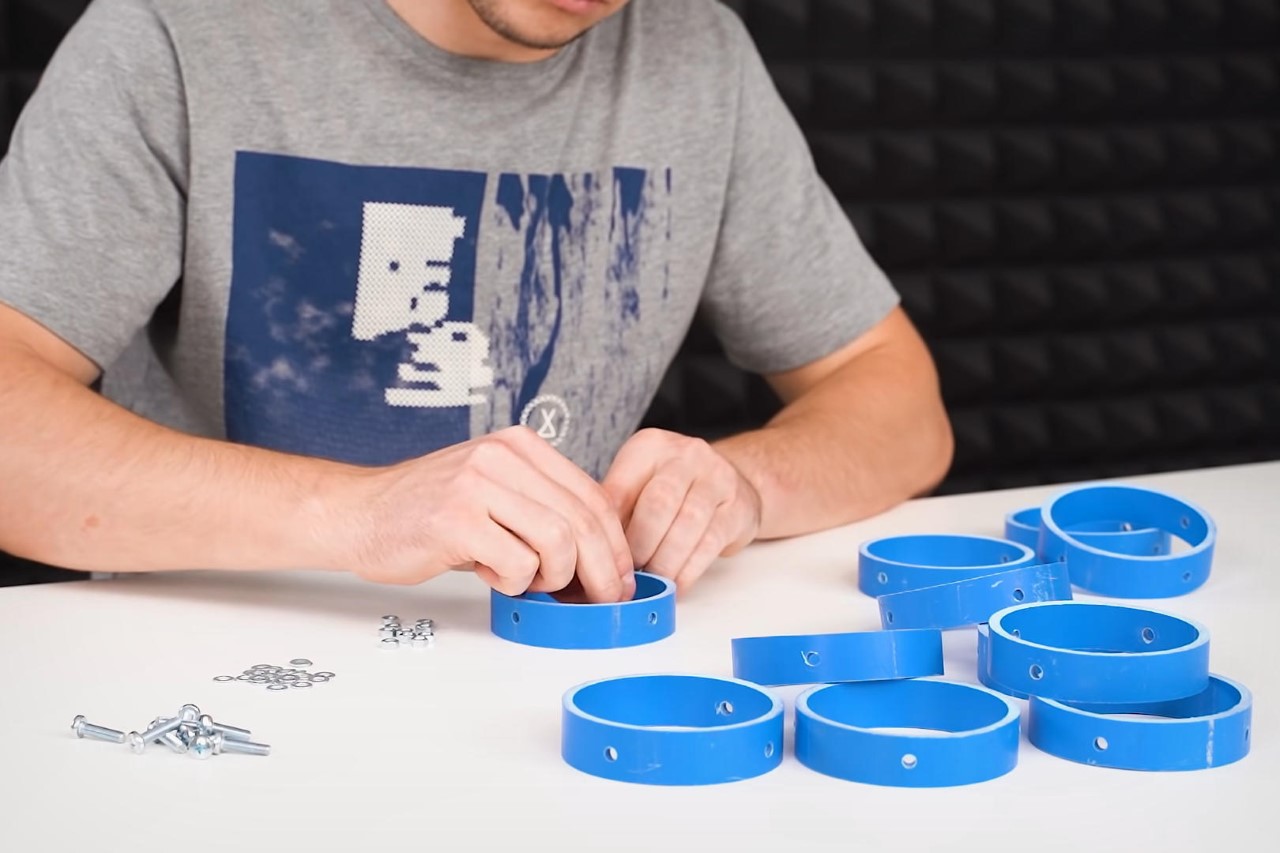
To create the airless tire section, The Q began by cutting 1-inch-thick sections from the PVC pipe. (It was also important to choose the right sturdy pipe at the beginning). He began by drilling holes in the PVC rings and then screwing them around the perimeter of the wheel. Each wheel needed 66 PVC ring in three rows, each with 22 rings. This totaled 132 rings. Once the rings were assembled, the YouTuber attached the tread to each wheel.
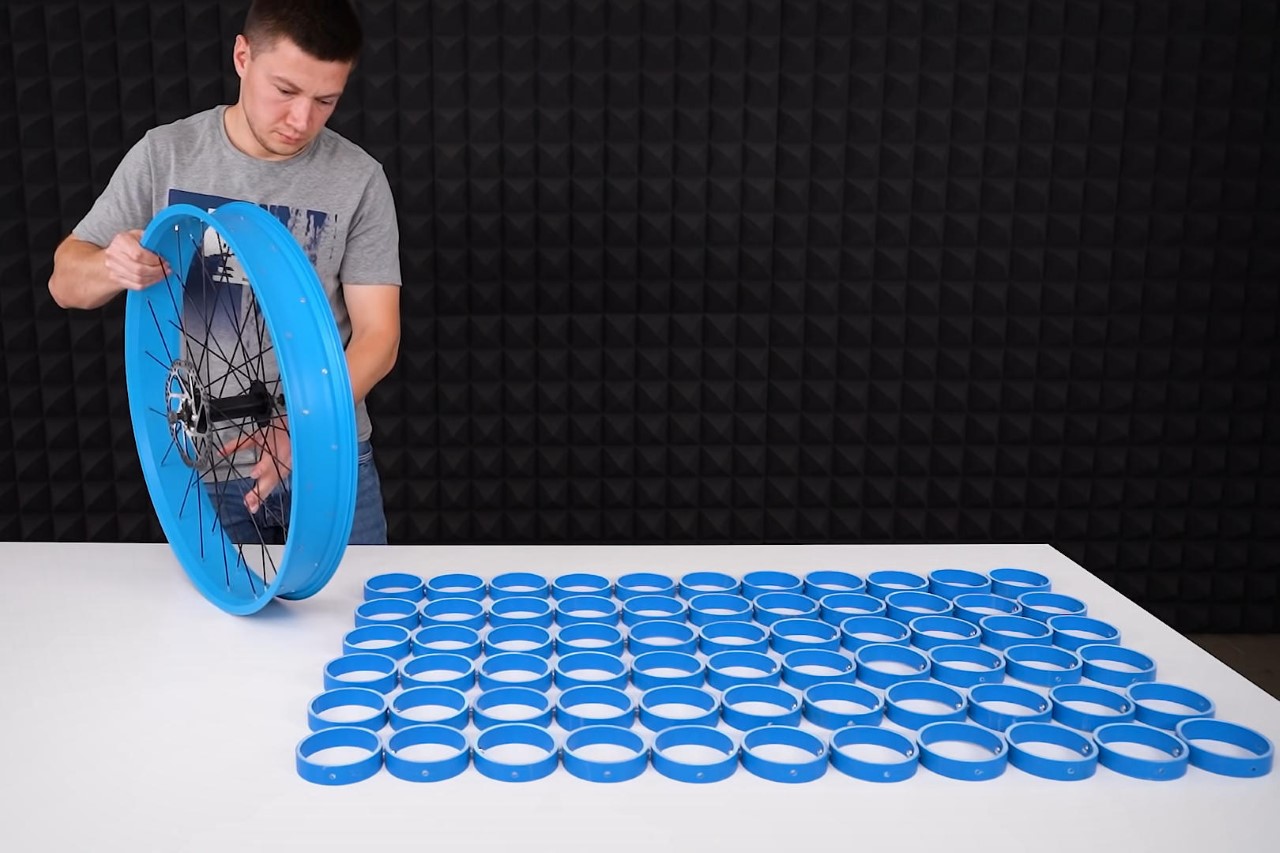
Each wheel uses 66 PVC Rings
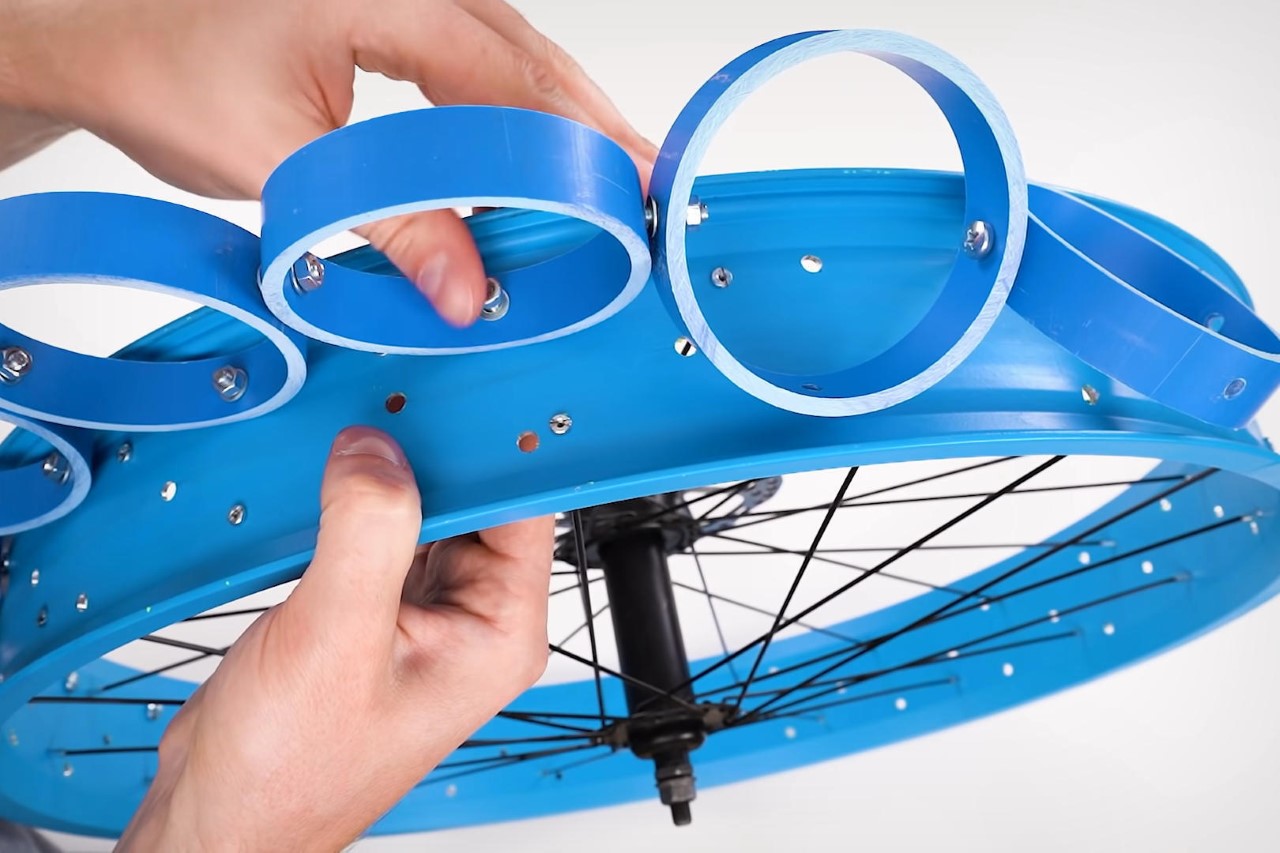
This video is a great guide for anyone who wants to make their own airless tire. Finding the right diameter PVC pipe for your wheel frame may require some math or a little trial and error if you’re like me, but once you’ve found yourself the perfect PVC pipe, make sure you cut it to the right cross-sectional width to give yourself at least 3 rows of rings to ensure the wheel has a reliable and durable build. Obviously, we don’t recommend trying this for a motorcycle or a car… but it helps to just make our disclaimers clear!
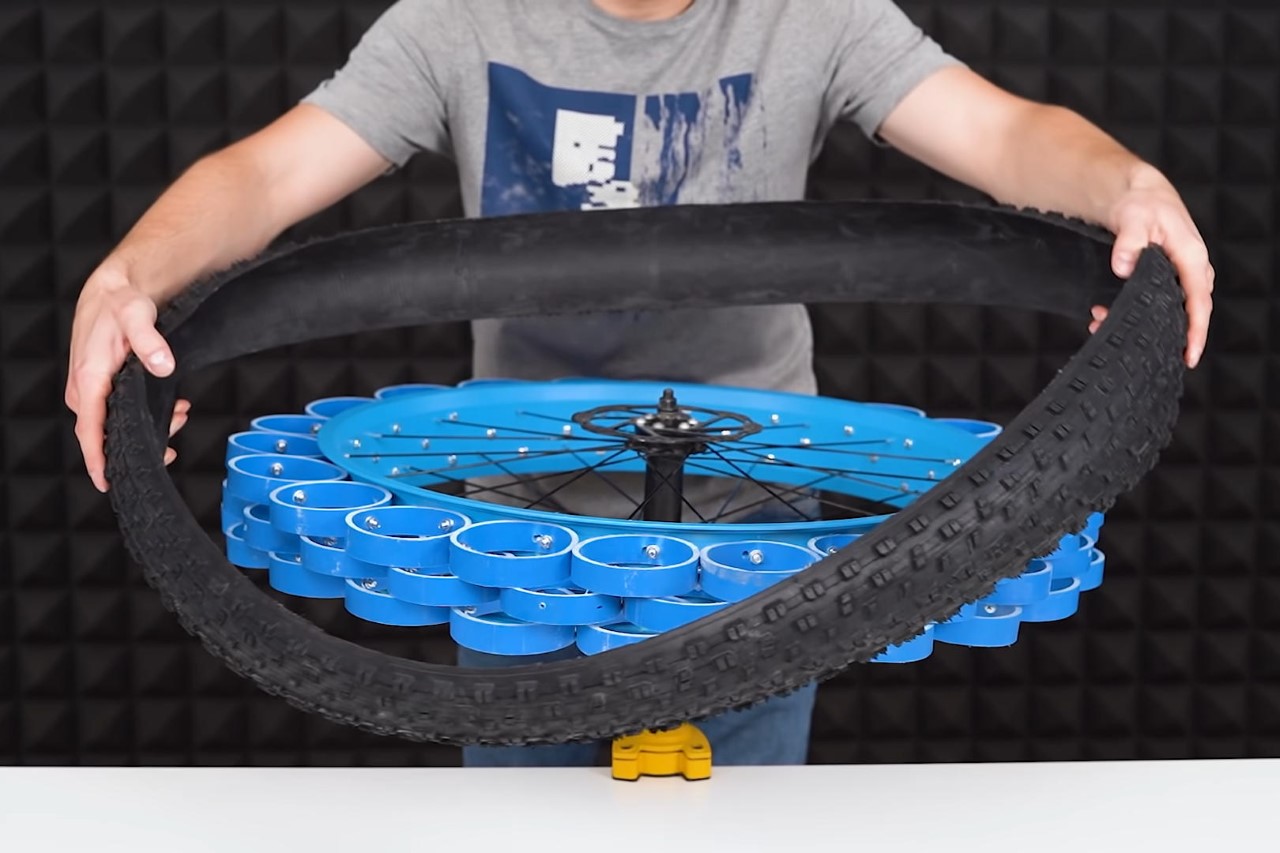
Although the tire tread mounting doesn’t look like the most secure fit, it hugged the wheel well enough for a trial run. Future builds can use a PVC expanding ring to secure the tire treads and prevent them from falling off. But the PVC design was a decent proof-of concept that required less than $50 in equipment.
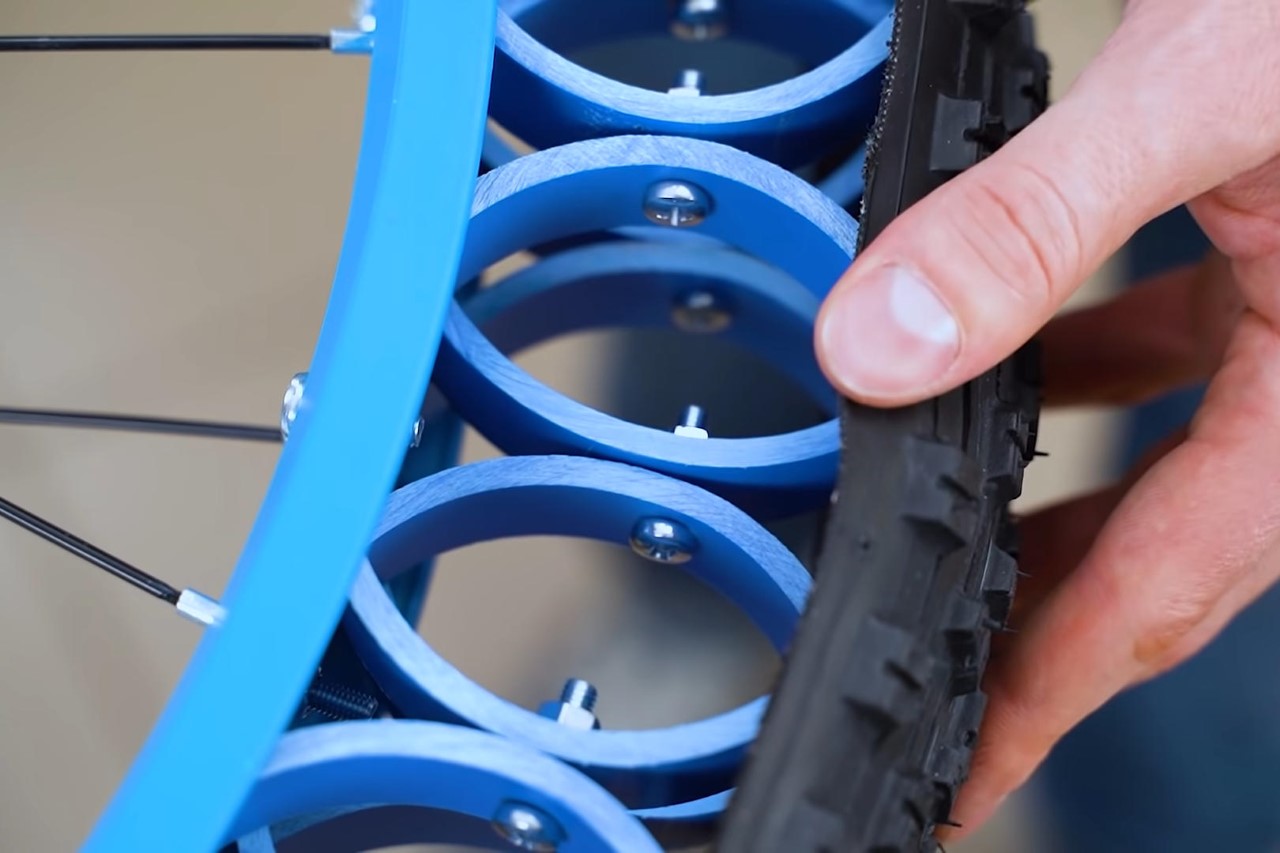
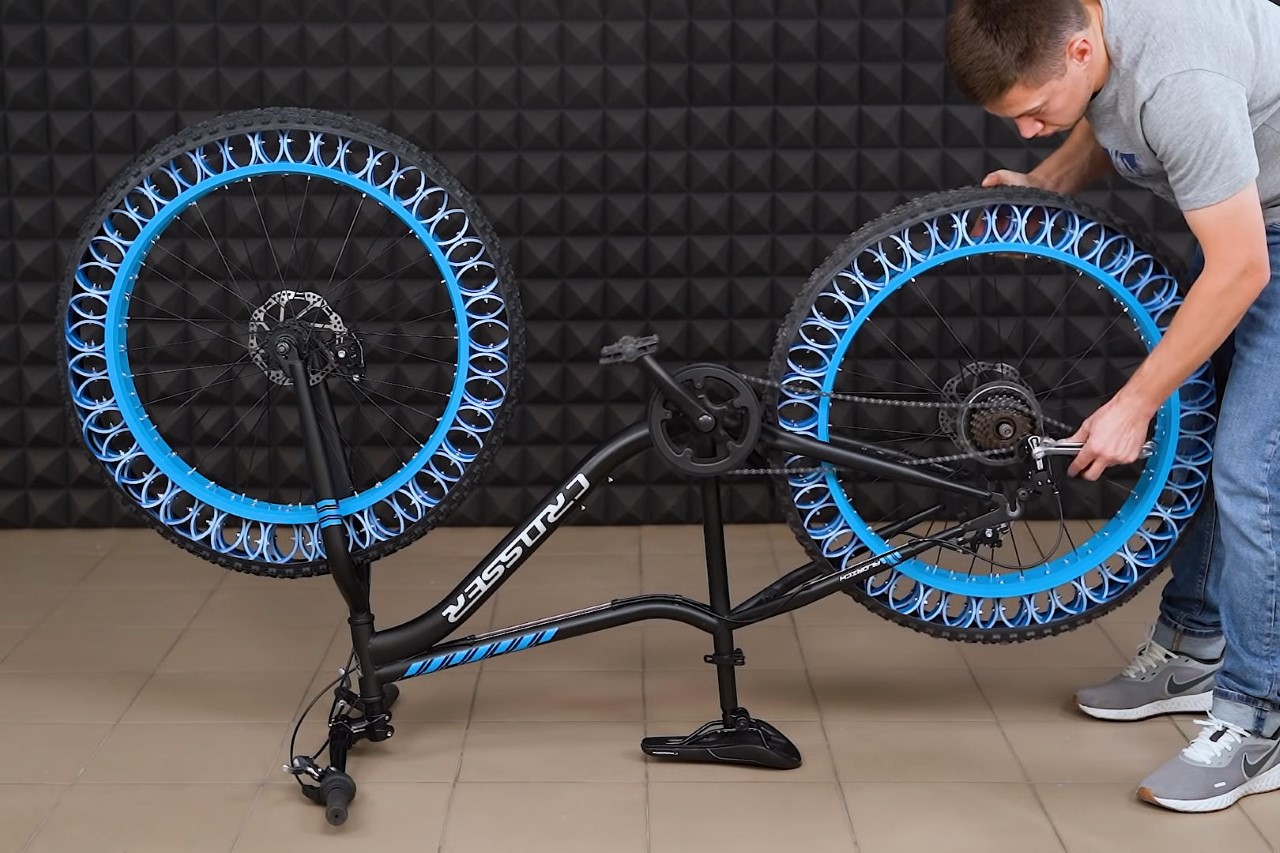
After each tire was assembled and installed back on the bicycle frame, the YouTuber took it out for a spin, riding it along on tarmac and a park pathway, occasionally alternating between the two to show the wheel’s ability to take minor bumps and undulating terrain. What The Q didn’t display in the video was rough usage (like riding down stairs) or even the condition of the wheels after a day’s worth of riding. It’s possible that the damage to the wheels was minimal. PVC pipes were designed to last and show wear only when exposed to chemicals and UV radiation. Even if a PVC ring does crack, replacing it should be easy, since the broken ring is easily identifiable, can be unscrewed and replaced.
